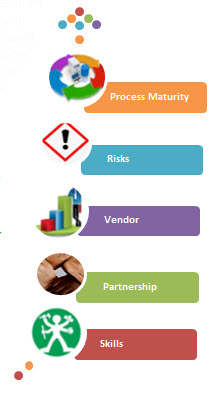
Show Me the Artifact! Process Heavy Output Can Give a False Sense of Successful Execution
Working on technology projects whether you are on the business or IT side of the house often becomes a labor of intensity around producing hundreds if not thousands of pages of documentation. Churning iterations of documents in order to comply with your software development lifecycle processes remains an age old struggle for most organizations.
The adoption of methodologies baked in heavy rigor around process components and an accompanying set of templates is intended to serve as validation of the completion of a stage or step in the lifecycle of software development; signaling the ability to move on in sort of a sequential build out of the next set of templates and documents that will eventually contribute to the actual creation of a “thing”. It doesn’t matter what development methodology you use, it can at times feel like teams are in the document production business versus the value creation that is needed to enable stakeholders with the capability to successfully execute.
These artifact production requirements, when combined with what I call the Process Capability Index (PCI) of your software development organization, requires the right balance between an overly prescriptive mandated approach and one in which insufficient controls exists to ensure that software products are being delivered with a high degree of quality, security and business value.
Organizations with centralized IT resources and a fairly junior resource pool of Project Managers will gravitate towards a document laden process that involves templates and guidance to help foster skill development and consistency of delivery. This approach makes sense as a temporary measure but must be backed up by a concerted plan to introduce a curriculum based training program that seeks to enhance the skillsets needed to organically grow the capabilities of the team lessening the need to police document development.
Hence, the first component of the PCI, the Skill Capabilities Commitment measure, is based on an organization’s commitment to ensuring that the skills of its talent base grows in line with the ever changing landscape of technology and business requirements. Organizations should work to ensure that templates do not become the primary vehicles for enhancing associates’ skillsets and fostering process alignment. Low scores in this area often trigger the need for the engagement of your Process, Training and Talent Acquisition teams to help strike the right balance between what you teach, who you recruit and what you actually really need to focus on to be successful.
on an organization’s commitment to ensuring that the skills of its talent base grows in line with the ever changing landscape of technology and business requirements. Organizations should work to ensure that templates do not become the primary vehicles for enhancing associates’ skillsets and fostering process alignment. Low scores in this area often trigger the need for the engagement of your Process, Training and Talent Acquisition teams to help strike the right balance between what you teach, who you recruit and what you actually really need to focus on to be successful.
Another input into your PCI Index is the degree to which the business and technology teams partner, called the Effective Partnership measure, this component often involves candid discussions with senior leadership about the confidence level of partnering that can be expected between managers and work teams during the launch of projects for the year. We often hear about the benefits of post implementation reviews but PCI is leveraged before the launch of projects and involves a no nonsense discussions and assessments about the challenges of upfront partnership between the business and IT.
It does not make sense to move ahead with any project that scores low in this area because foundational trust, cooperation and engagement are lacking and will be leading indicators of potential project failure, perceived or actual. A low score hear can be a game changer.
Adjusting incentive compensation to measure the degree of partnering and cooperation between organizations can also help remediate challenges in this space, but what is really needed is a concerted effort to break down silos and hold leadership and associates accountable for changing this dynamic by focusing on consistency of messaging and actions by all. While sign-offs, authorizations and documentation is part of the process, organizations should place greater emphasis on having the right discussions as opposed to turning delivery into an exercise in executing “mortgage like” contracts. Flexibility and pre defined processes around handling scope changes in addition to having the right discussions can help increase scores significantly in this area. Other components of PCI include; Vendor Engagement, Risk Tolerance and Process Maturity
Teams that operate in an environment of true partnership will certainly fare better than teams that over rely on holding each other accountable through paper output. That goes for all stakeholders including business and IT associates. PCI helps organizations assess key points of engagement across disparate teams in an effort to get rid of the mistrust that often reveals itself in silo or heavily segmented organizations. When an organization fires on all four cylinders (people, process, technology, execution) it makes for an environment where work behaviors can take the place of blame avoidance.
If you truly want to stretch your talent and grow your organization, close down Microsoft word and start talking and listening to each other.
Don’t forget to leave your comments below.